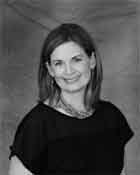 | Gentry White is the owner and lead therapist for Southeast Kansas Speech Pathology Services in Pittsburg Kansas. She received her Bachelor of Science in Education from the University of Nebraska at Kearney in 1998 and her Master of Arts in Audiology and Speech Sciences degree from Michigan State University in 2001. She has been practicing Speech-Language Pathology in southeast Kansas since moving to Pittsburg in 2001. Gentry resides in the Pittsburg area with her husband and children. She can be contacted through her website www.sekspeech.com or her office phone at 620-232-2990. |
Health & Wellness
2012-11-07 11:06:53
Lisp in childeren
A- There are four classifications of “lisps” that Speech-Language Pathologists (SLP) use to categorize a patient’s speech pattern for a distorted /s/phoneme production; the lateral lisp, the palatal lisp, the interdental lisp and the dentalised lisp. These classifications are merely a way for SLP’s to determine where the speech distortion is being produced within the oral cavity.
The lateral lisp is made when the tongue position makes contact with the hard palate (bony surface behind the upper front teeth) and the air-flow is pushed to the sides of the tongue. It could sound like a distorted /L/ sound. This is a true articulatory pattern error and the child should be seen by a Speech-Language Pathologist to determine if treatment is necessary.
A palatal lisp occurs when the middle of tongue makes contact with the soft palate (soft surface on the roof of the mouth). The goal of producing the /s/ could sound may sound closer to a /h/ and “slushy” when the patient attempts to produce this phoneme. Again this is an articulatory pattern error and the child should be seen by a Speech-Language Pathologist to determine if treatment is necessary.
An interdental lisp occurs when the tongue tip protrudes between the front teeth and the airflow is pushed forward and may come out sounding like a /th/. This lisp is typical in a child’s speech acquisition but should resolved in their speech before 4 ½ years. If it has not resolved by that point, an evaluation could determine if the child is stimulable (able to tolerate cues for correction) for treatment.
A dentalised lisp is produced when the tongue tip touches the front teeth. This misproduction may sound “muffled” and “unclear” to their listeners. This type of lisp may sound like the patient is over correcting their speech to be more articulate, thus distorting the /s/ production. This pattern error is correctable and the patient should be seen by a Speech-Language Pathologist.
Lisps may occur as single-sound errors or may be a part of a collection of a pattern of errors. If you are concerned about your child having distorted speech with the /s/ or other sounds, please contact a Speech-Pathologist to see if he/she is age-appropriate for correction to reduce a habitual pattern error. It is easier to correct the speech disorder if it is caught early and the child is “ready” to accept intervention.


